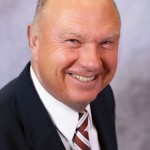Cornell Hosts International Fruit Symposium
Last August, Cornell University in Geneva, NY, was home to a gathering of 280 fruit scientists and growers under the auspices of a symposium presented by the International Society for Horticultural Science (ISHS). Geneva is home to Cornell’s New York State Agricultural Experiment Station (NYSAES), famous for its fruit research and apple rootstock breeding program. Dr. Terence Robinson did an outstanding job convening the symposium. He led a knowledgeable team of Cornell faculty and staff to host the ISHS organization in the U.S. The symposium is only held once every four years, each time in a notable fruit production area. It was last held in Hungary.
The aim of the ISHS is “to promote and encourage research and education in all branches of horticultural science and to facilitate cooperation and knowledge transfer on a global scale through its symposia and congresses, publications, and scientific structure.” This symposium accomplished that and more!
In Geneva, more than 79 oral presentations were made and 132 posters on research topics were displayed. Fruit growers and nurserymen from New York attended and were joined by growers from as far away as Australia and Mexico. The poster session is always a highlight, as they can be viewed at the convenience of the participants in between the oral presentation sessions of the event.
Posters are presented as a summary of a particular research project. They might represent preliminary results, or they might be a report on the final work published by a researcher. The easy-to-read posters contain photographs, charts, tables, and text summaries, as well as an abstract summary of the work being presented. It makes for a nice format to get a lot of information out to the participants.
Among the highlights was new information on work being done with rootstocks, varieties, and plant growth regulators, and how they fit into production systems around the world. Topics ranged from “Effect of Rootstock on Taste-Related Properties of Nordic Apple Cultivars” to “Ethephon as a Bloom and Post-Bloom Thinner for ‘Summerred’ Apple Trees” to “Using Naphthaleneacetic Acid To Reduce Shoot Growth When A Heading Cut Is Used To Lower Tree Height In Super-Spindle Apple Trees.”
Touring Local Orchards
Another highlight was participating in the orchard tours of both the NYSAES at Geneva and commercial orchard and nursery operations in the area. All the participants were in awe of the depth and breadth of the work at the Geneva NYSAES by Robinson and his colleagues. The range included extensive system trials on cherry, apple, and pear to extensive apple rootstock trials from Dr. Gennaro Fazio’s USDA/Cornell Geneva Breeding program. We were most impressed with the numerous sweet cherry system trials under high tunnel culture.
Of great interest to all were the orchard and nursery operations at Wafler Farms, Inc. On the nursery side, manager Bill Pitts demonstrated his techniques and the equipment used to precision apply plant growth regulators to increase and promote branching (feathers) on one-year-old stock in the nursery. Paul Wafler gave us a hands-on demonstration of how he manages his tall spindle Gala production.
Another highlight of the tour was visiting the orchard of Alison and Tom DeMarree. Outstanding growers, they have jumped on the club variety bandwagon, having joined the MN 1914 apple club. The big question at the time was, what will MN 1914 be named? They would not tell us; they were sworn to secrecy. Since then, the cat has been let out of the bag: MN 1914 has been named SweeTango.
At Demarree’s, we were treated to an outstanding 10-acre apple block of SweeTango grown in a tall spindle system. We also learned the ins and outs of being in a club and the costs involved. It was quite steep to become a member, but the trade off will be limited controlled production and extensive marketing support from Pepin Heights Orchards in Minnesota, who bought the management rights for this club from the University of Minnesota.
One last highlight comes to mind for me: the ability to interact with growers, researchers, and Extension scientists all working in the area of improving tree fruit production. After 31 years in the pomology Extension game, I have made friends from all areas of the world, often as a result of participating in these international conferences and symposiums. The knowledge gained as well as shared can never truly be measured.










